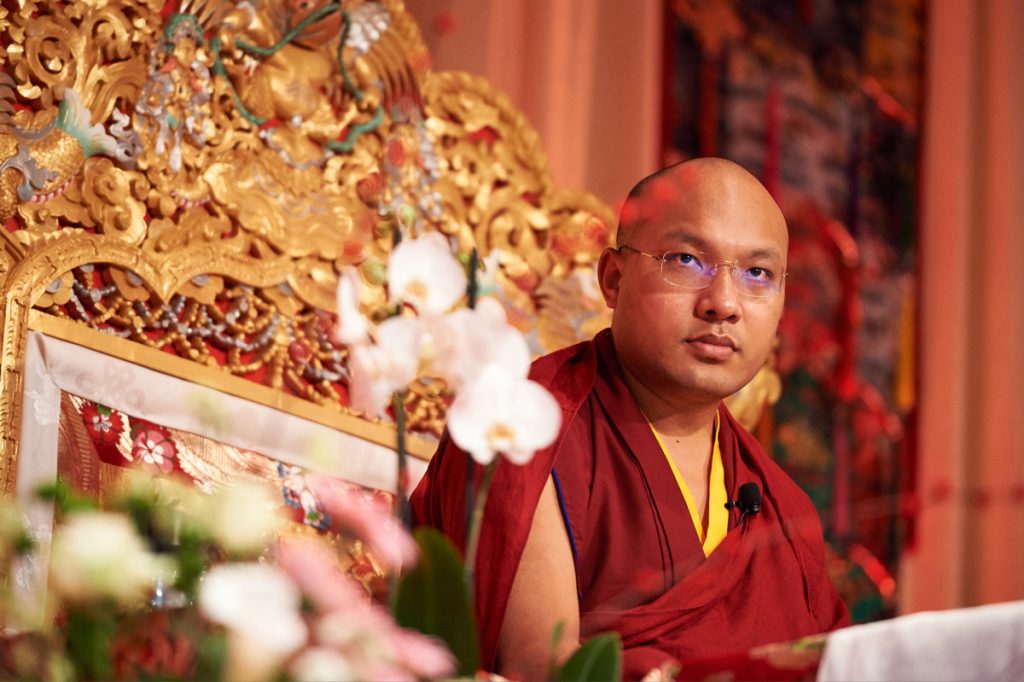The 17th Karmapa Ogyen Trinley Dorje recently delivered what some might consider an unusual message to his followers. In a YouTube video uploaded in early March, the prominent Tibetan Buddhist religious leader openly expressed his life-long struggle to meet the demands that come with his leadership role—saying, “I have been depressed”—as well as his wish to dissolve sectarian sentiments within his lineage.
“Many people think to themselves that being the Karmapa is some incredible thing, but for me, that hasn’t happened,” said Ogyen Trinley Dorje, 32, one of two claimants to the title of the 17th Karmapa, the head of the Karma Kagyu lineage of Tibetan Buddhism.
His message, published with English translation in a 37-minute YouTube video on March 9, was first screened at the conclusion of the seven-day Kagyu Monlam, an annual prayer ceremony in Bodh Gaya, India, attended by thousands of the Karmapa’s students from across the globe. A regular presider over the Monlam ceremonies, this year the Karmapa sent his video from the US, where he has resided over the past six months for rest and medical purposes.
The Karmapa shared his disappointment with the disorganized education he had growing up in both Tibet and India, where he fled to escape Chinese control in 2000. Contrary to the lives of past Karmapas, Ogyen Trinley Dorje said, he has been separated from the primary teachers of his tradition.
“I never really felt that I had any freedom of my own,” he said of his youth at Tsurphu Monastery, the seat of the Karmapa in Tibet, where he lived under close supervision at all times.
As the Karmapa noted, questions have arisen lately as to why he has remained in the US, though he assertively denied any intention for personal benefit or “insidious plans.” He also acknowledged a history of rocky relations with the Indian government, who at one point suggested that the Karmapa might be a Chinese spy. The Karmapa reflected on how these accusations add to the unending pressure he feels to embody the carefully curated lifestyle many expect to see from a living Karmapa—a figure traditionally seen as an incarnation of Chenrezig, the enlightened bodhisattva of compassion.
“When other people look at what I’ve tried to do, they take it as a matter of course. But on my own part, I’ve had to give up a lot,” he said. “None of it has been easy. If those around me do not believe in me, then there is no reason to pretend and keep going, so for that reason, I have been depressed.”
Related: Time for Radical Change in How We Raise Our Tulkus
In a moment of sharp address, the Karmapa’s special Monlam message took a critical stance on an internal sectarian rift that occured after the passing of the 16th Karmapa, Rangjung Rigpe Dorje, in 1981. In search of his reincarnation, two Karma Kagyu lineage holders, Shamar Rinpoche and Tai Situ Rinpoche, identified and enthroned two different successors. Ever since, the historically singular lineage of Karmapas has experienced substantial sectarian divide.
“Our teachings—the Kamtsang [another name for the Karma Kagyu lineage]—are the same, our guru is the same, the color of our hats is the same. But if despite this we continue to cling to our own factions—no matter how right we are—we will have such bias to our own side [that] we will work to win for ourselves and to defeat the others. Taking this on would be a complete mistake; there would be nothing good about it,” the Karmapa said.
He insisted that reconciliation is possible, though he must not be alone while striving for it.
Seeking both sectarian resolution as well as space to focus on being an “ordinary dharma practitioner,” the Karmapa called upon his sangha for a greater communal effort in embodying the Buddhist teachings as the lineage looks to its future.
“A single pillar can’t hold up a whole building, can it?” the Karmapa asked.
See the Karmapa’s full message here:
Thank you for subscribing to Tricycle! As a nonprofit, we depend on readers like you to keep Buddhist teachings and practices widely available.
